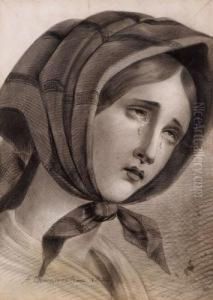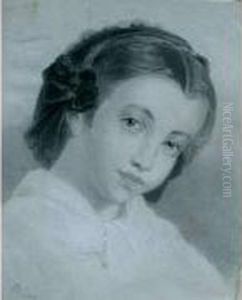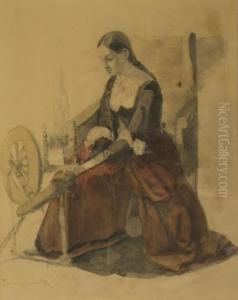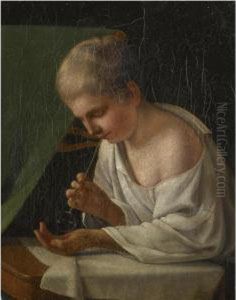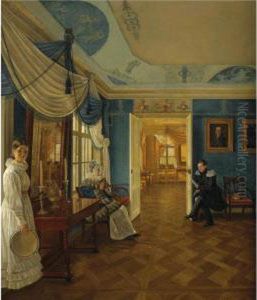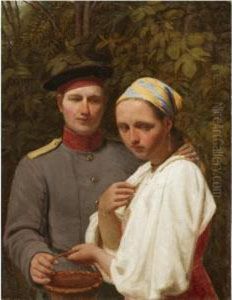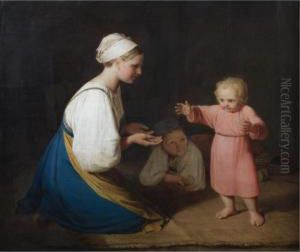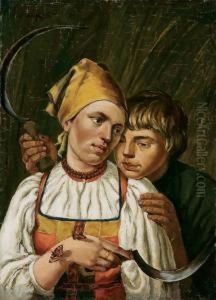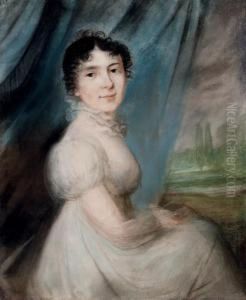Alexej Gavrilovitj Venetsianov Paintings
Alexej Gavrilovitj Venetsianov was a Russian artist and the founder of a trend in Russian painting that focused on the depiction of the rural life. He was born on February 18, 1780, in Moscow to a family of Greek origin. Little is known about his early life and training, but it is believed that he began his career as a civil servant, which allowed him to meet various artists and collectors.
Venetsianov's interest in art grew over time, and he eventually decided to pursue it as a career. He studied under the guidance of the Russian portraitist Vladimir Borovikovsky and, by 1807, had begun to make a name for himself as a talented portrait painter. Venetsianov's work caught the eye of Tsar Alexander I, who purchased one of his paintings, and this royal patronage helped him to establish his reputation.
In the early 1810s, Venetsianov's artistic direction took a significant turn when he moved to the countryside and began to focus on scenes of rural life. He developed a realistic style that was quite distinct from the prevailing tastes of the time, which favored more classical and historical themes. Venetsianov's intimate knowledge of the Russian peasantry allowed him to depict their lives with a sense of empathy and truthfulness that was rare for his era. His work in this genre was pioneering and laid the groundwork for the later Peredvizhniki (Wanderers) movement.
Throughout the 1820s, Venetsianov continued to paint rural scenes, and he also became an influential teacher. He opened his own art school, which was one of the first to admit students of all social classes, including serfs. This was a radical move that reflected Venetsianov's democratic beliefs. His school and his art promoted the natural beauty of the Russian landscape and the dignity of the Russian peasant, subjects that had been somewhat neglected in Russian art prior to his influence.
Unfortunately, Venetsianov's later years were marked by financial difficulties and a decline in his reputation, as his style fell out of favor with the changing tastes of the art establishment. He died tragically in a road accident on January 4 (O.S. December 23, 1847), leaving behind a legacy that would only be fully appreciated posthumously. Today, Alexej Venetsianov is celebrated as a key figure in the development of Russian realism and for his heartfelt portrayal of the Russian countryside and its people.
